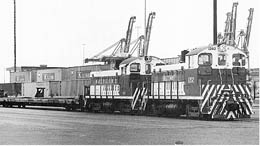On October 1, 1985, the Tacoma Municipal Belt Line Railway becomes a tariffed common carrier as its freight switching rates take effect with the Interstate Commerce Commission. Since 1924, the line negotiated fees with each client for moving cars between mainline railroads, industries, and the Port of Tacoma. This move places the line on the same kind of cost-based fee structures that govern interstate carriers and places it on a stable system of revenue.
The Tacoma Belt Line became a real railroad on March 23, 1942, when it was recognized as a common carrier and subject to the federal Railroad Retirement Act of 1937, even though it was a City department. But fees for switching cars were still subject to contracts worked out with the industries served, the railroads, and the Port of Tacoma. The line struggled for decades to meet expenses and maintain its system. Most of the time it lost money, but it served an important function by moving freight cars, and the City Council believed in providing this service. In 1962 and in 1964, the City Council seriously considered selling the line, which consisted of five locomotives.
Business and operations improved a little through the 1970s, but during that time two of the four railroads served by the Municipal Belt Line Railway ceased operations and maintenance was deferred. Two of the five locomotives were inoperative. A 1984 management study recommended changing the rate structure so that the line could pass along its expenses to its customers. This, and a merger with Port of Tacoma operations, placed the line on a more stable financial footing.

